Bahia, Brazil —(Map)
Scientists working in Brazil have discovered a collection of termite mounds that cover an area as large as Britain. The oldest mound they tested is close to 4,000 years old.
The mounds are small hills of dirt about 30 feet (10 meters) wide and about 8 feet (2.5 meters) tall. The tallest mounds are about 15 feet (5 meters) tall. The mounds were built by tiny insects called termites. Termites dig tunnels underground and need somewhere to put the dirt they remove. The mounds grow slowly as termites come from underground and throw out tiny pieces of dirt.
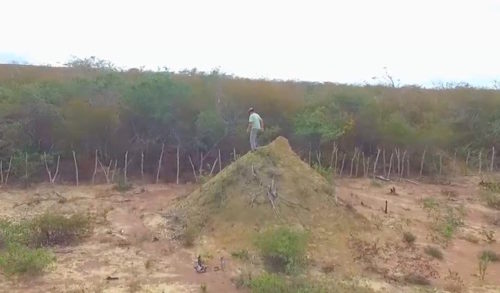
(Source: By Martin, Et Al..)
The termites that built these mounds are known as Syntermes dirus. They are about a half an inch (1 centimeter) long. Some termites build mounds with lots of paths inside leading to a nest. But not these termites. The mounds they built simply have one tube going up to the top so that they can throw the extra dirt out.
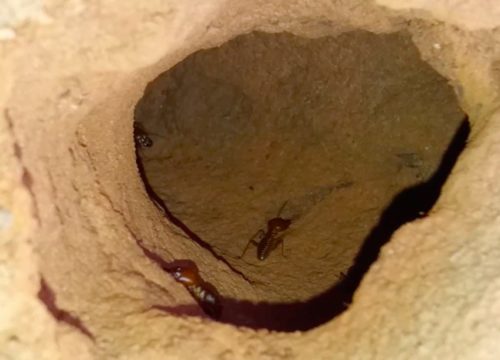
(Source: By Martin, Et Al..)
Under the ground, the termites have done something amazing. They have dug a system of tunnels that goes for miles and miles. Until recently, no one had any idea how huge the termites’ building project was.
The mounds are in an area covered by a very dry forest in northeast Brazil. The main plants are small, thorny trees that are dry and white for most of the year, but turn green in the rainy season. Once a year, the trees drop their leaves. This is the main food for the termites. The trees also do a good job of hiding the mounds.
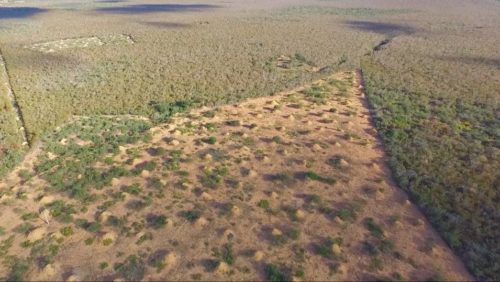
(Source: By Martin, Et Al..)
The scientists easily spotted the mounds in an area where the trees had been cleared. But they soon discovered that there were mounds about 60 feet (20 meters) away from each other that kept going in all directions. The mounds are evenly spaced and create a six-sided pattern that the scientists think helps the termites get food easily.
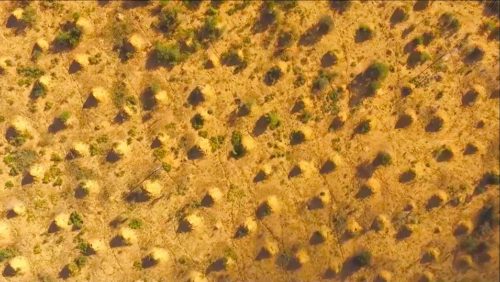
(Source: By Martin, Et Al..)
In all, the scientists believe there are about 200 million mounds, covering about 88,000 square miles (227,919 square kilometers). That’s about the size of Britain. Dr. Stephen Martin, one of the scientists said, “As humans, we have never built a city that big, anywhere.”
Below the mounds are termite tunnels that go for thousands of miles. The scientists say that over thousands of years, the termites have dug up enough earth to fill a cube that is over 1.3 miles (2 kilometers) on each side. That’s about 4,000 times as big as the great pyramids of Giza.
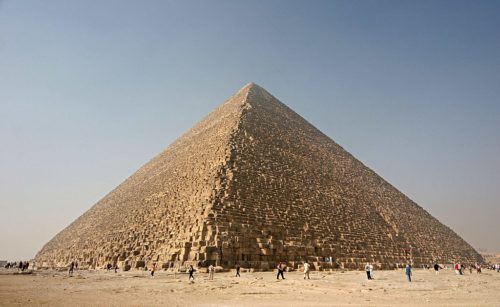
(Source: Nina via WikimediaCommons.)
The termites travel through the tunnels, talking to each other with the smell of the chemical trails they leave. At night, when there are leaves to eat, they make tiny openings to go outside to collect leaves. Then they close the openings back up again.
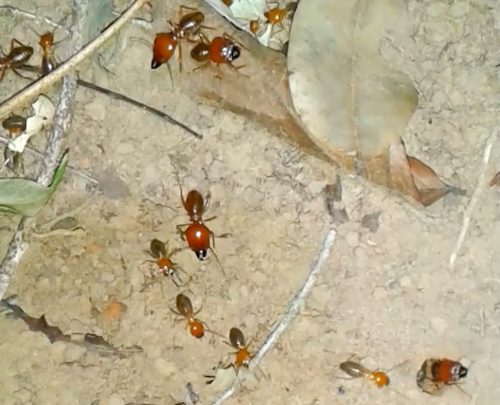
(Source: By Martin, Et Al..)
Of the 11 mounds tested, the youngest was about 690 years old. The oldest was about 3,820. The scientists think others may be older.
The scientists are just beginning to study the mounds, and hope to learn more in the future.
😕
This map has not been loaded because of your cookie choices. To view the content, you can accept 'Non-necessary' cookies.
